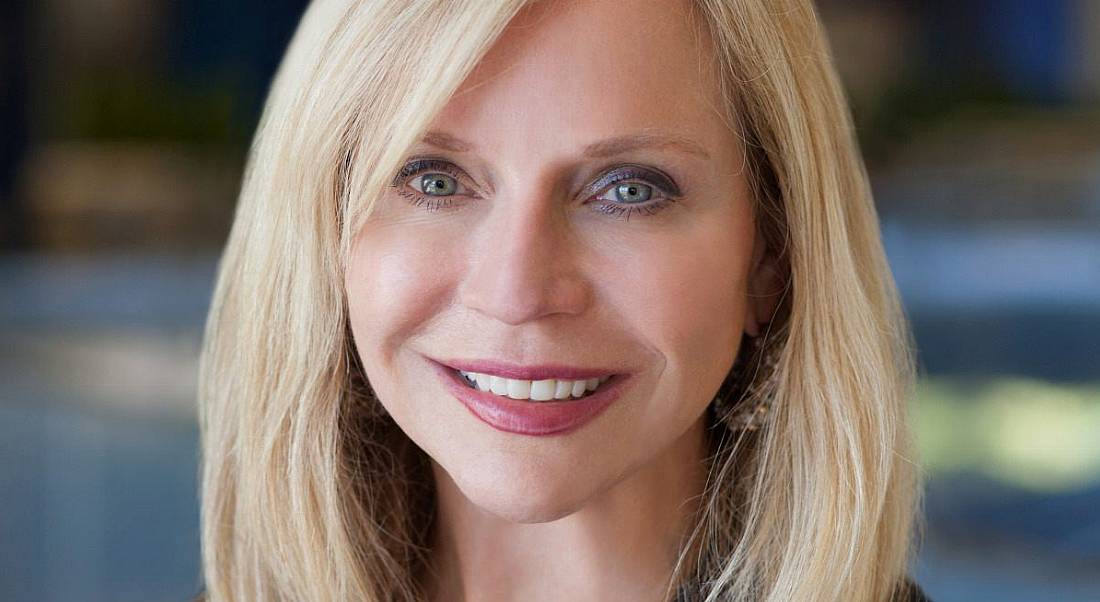Amy Cappellanti-Wolf, the former CHRO of Symantec, discusses what she learned about change management in a $10bn acquisition.
I spoke with Amy Cappellanti-Wolf on what was her last day at cybersecurity company Symantec. In her role there, which she occupied for five and a half years, she was senior vice-president and chief HR officer.
When Cappellanti-Wolf joined Symantec in 2014, it was an umbrella company for storage and security solutions. That year, it announced plans to move away from the storage side of its business to focus purely on security, resulting in a $7bn sale.
After that, Symantec spent the next few years engaging in more acquisitions and divestitures, something Cappellanti-Wolf described as a series of “ups and downs” that prepared her and her team for the company’s most recent project – a massive divestiture of its enterprise security business with global infrastructure technology company Broadcom.
The company signed the $10.7bn deal with Broadcom in August with a target date to close in early November. “That was the huge undertaking. It meant everything from identifying the population of employees they wanted to bring over, to global complexities,” Cappellanti-Wolf said.
“There was a heavy shifting of uncertainty because people didn’t know if they were going to go to Broadcom or if they were going to remain or if they’d even have a job. That was the part, I think, that was pretty challenging. And we did it. But yes, we’re a little older and more tired for it.”
Change management
I asked Cappellanti-Wolf if she thought of her role in the divestiture as change management. “I do,” she said. “It’s a very old term, and people define it differently. But true change management means looking at the whole system and looking at the upstream and downstream decisions you have to make in order to get to an outcome.
“What processes have to be different because they’re not going to work for the new change? And that’s everything from reward systems and assessments to how workflow actually occurs.
“And so, all the work we did in change management with this particular divestiture was one big, robust communications plan where we tried to be as transparent as we could and tell people whether they would keep or lose their jobs in this.”
Here, Cappellanti-Wolf talked about something that often comes with divestitures and other major changes – losing some people from your workforce along the way. For Symantec, this resulted in a “huge sense of uncertainty”, she said, adding that communication was crucial.
‘Once you know that you can do something really hard, the next mountain doesn’t seem so hard to climb’
– AMY CAPPELLANTI-WOLF
“We said to people right out the gate: ‘You’re probably not going to have a long-term job here. And if you do, we will let you know as soon as we can and during this time, we will ask for your help to manage through the transition of this divestiture’.
“It was with those types of conversations, trying to reassure people that we did our best trying to remain transparent.”
How your people should be treated
Speaking further about her approach to people management in the lead-up to the divestiture, which she referred to as her “area of passion”, Cappellanti-Wolf said it was a challenging time for everyone as a lot of her team knew they weren’t going to have jobs after it was complete.
However, she was “astonished” that, in the face of a very short timeline with very big deliverables, they still remained focused on the task, despite knowing that their future with the company was short. To boost the team’s morale, she hosted a series of all hands for employees that would most likely be impacted in the shared services teams.
“Myself, the CFO, CMO and CIO would get together and have monthly townhall meetings with all employees to talk about where we were at in the process, what they could expect and when they could expect it.
“I think that helped. And sometimes we were brutally honest. I thought, if you treat people like they’re not adults, they’re not going to appreciate that. We thought that was critical. But it was hard.”
Applying a growth mindset
One of the most important traits of a change management leader is cultivating a growth mindset, according to Cappellanti-Wolf. She said that she always tries to think about what she can learn from a difficult situation.
“I said to everybody: ‘You guys just look at your resumés. Look what you have accomplished, not only in this Broadcom deal, but in others, too. Look at the skills you gained, both those soft skills and technical skills – things you would never have touched on in any other company in this short period of time’.”
A key question for her was how to capitalise on those skills and experiences in future jobs within the company, if you were staying on, or in the next stage of your career.
“So, how do you capture that one as a real capability that you bought for yourself and how do you apply it? It was painful. We had to work pretty hard and we had to work around things. And we did sometimes push and negotiate because some of the things that were going to be executed, we didn’t agree with.
“But then at the end, it was perseverance. I mean, once you know that you can do something really hard, the next mountain doesn’t seem so hard to climb. I would say people walked away with skills that they would never get in a normal course of business.”
If people don't understand why they need to #change, they won't change. This is why we should give employees a complete answer to the question "What's the rationale behind why we need to change?" #changemanagement @forbes https://t.co/d7NJ6cQOoP
— Amy Cappellanti-Wolf (@AmyCappellanti) January 22, 2020
Fortitude and forward planning
Alongside a growth mindset, what else does a leader need to help people remain positive and informed in the face of change? Cappellanti-Wolf highlighted two things she prioritised: fortitude and forward planning.
“First of all, you have to lead through uncertain times and sometimes you can get frustrated, where you just don’t feel like you’re in control. And people are going to be looking to you for stability, continuity and someone they trust will be having their best interests at heart. So, usually, you have to really step up and have a lot of fortitude.
“The second thing is getting a plan for the plan. Sure, it could seem easier just to jump in because it feels like you should move quickly. But before you move quickly, you’ve got to think, what’s my structure to get this work done? Who’s responsible for what? What’s the reporting mechanism so that we know when we’re doing well?
“Get organised about who’s going to lead this effort from a HR perspective on your team in terms of day-to-day, where new things will have to happen, like stand-up meetings.
“Get a plan for the plan, and then encourage your peers, both horizontal partners and whoever you are working with, to get equally as organised because then you can plug into each other much more effectively.”
Make sure you laugh, too
Beyond all of the challenges and hardships that come with a divestiture, Cappellanti-Wolf stressed the importance of decompressing.
“I mean, also, laugh. No one’s dying. You’re not making nuclear bombs or something horrible. There are times when you’ll have bad days. But you just have to think ‘tomorrow’s a different day’.
“So, we held beer bashes every couple weeks and other fun ways just to connect and not be at our desks working with our heads down. I think people might sometimes have to spend time together not talking about business, but just decompressing.”




